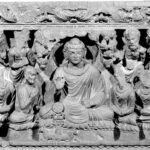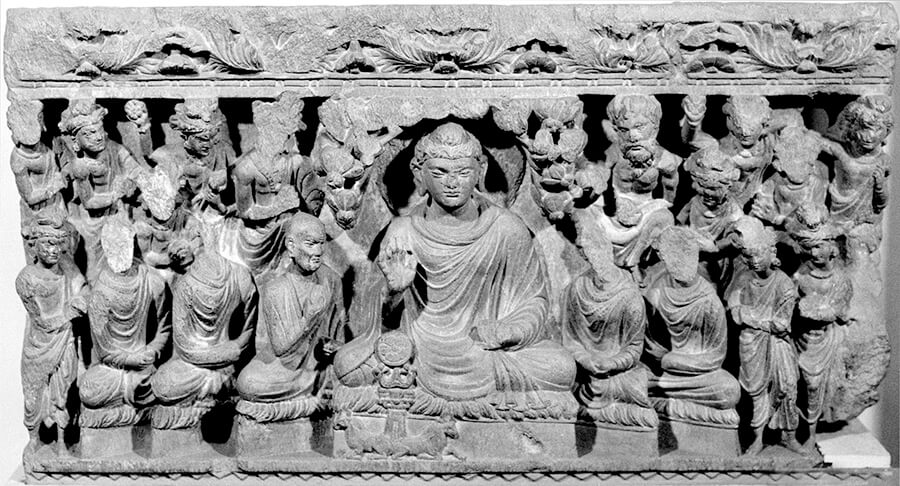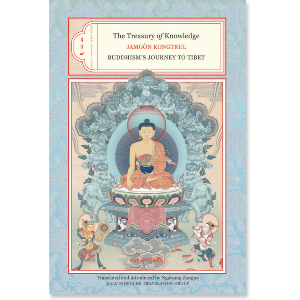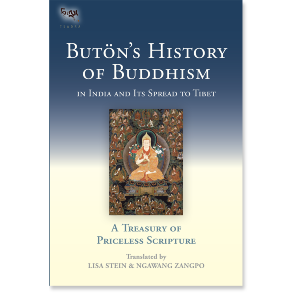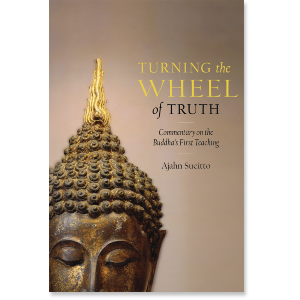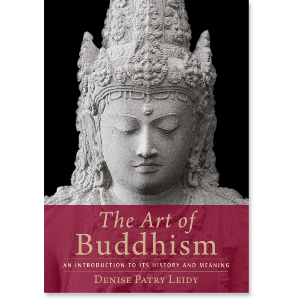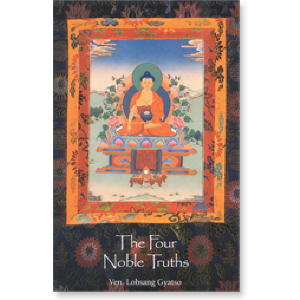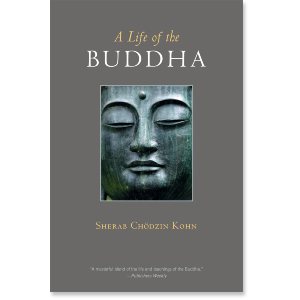One of the commonalities of the many traditions within Buddhism is the centrality of the messages in the Buddha’s very first teaching in Sarnath, shortly after attaining enlightenment in Bodhgaya. He held back from actually teaching the first people he met including the Burmese traders (who tradition tells us brought back some of his hair, which is encased in the incredible Shwedagon Pagoda in Yangon) and the naked ascetic Upaka, all of whom were overwhelmed by his presence.
The Tibetan tradition recognizes this (Chokhor Duchen) on the fourth day of the sixth lunar month. Theravada traditions generally mark the date (Asalha Puja or Asanha Bucha) as the full moon of the eighth lunar month.
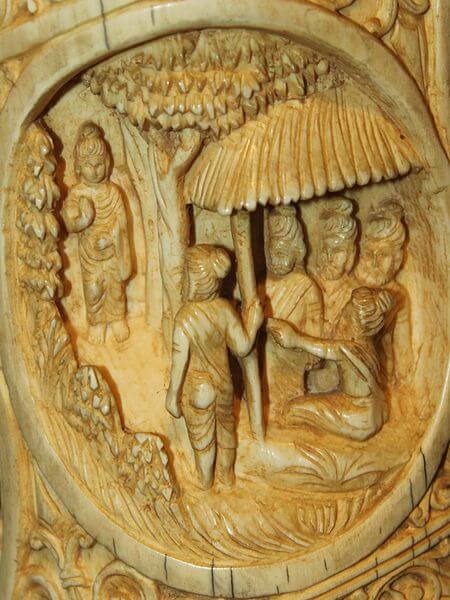
The first teaching, carved on ivory, by Nomu420, via Wikimedia Commons
As we know, when he was on the path of asceticism, the audience for the first actual teachings were his five companions (Kaundinya, Ashvajit, Vaspa, Mahanaman, and Bhadrika or in the Pali tradition, Kondañña, Vappa, Bhaddiya, Mahanāma, and Assaji). At first intending to spur him, they were so overwhelmed by his presence, they all were moved to stand up to greet and welcome him.
Stars at Dawn: Forgotten Stories of Women in the Buddha's Liferecords a wonderful description of the setting of this teaching as recorded in the Sri Lankan tradition:
The evening was like a lovely female; the stars were pearls upon her neck, the blue clouds were her braided hair, and the expanse was her flowing robe. As a crown she had the [heavens]; the three worlds were as her body; her eyes were like the white lotus . . . ; and her voice was like the humming of a bee. To worship Buddha, and listen to the first proclaiming of the dharma, this lovely female came.
The Mahayana traditions set the stage a bit with a bit more fanfare. Here is Jamgon Kongtrul’s description from The Treasury of Knowledge:
At that place, one thousand magnificent lion-supported thrones appeared. The Buddha circumambulated the first three; when he sat in cross-legged posture on the fourth, a great light spread throughout worlds in the ten directions, and a sound arose calling beings to listen to his teachings. A god called Bodhisattva Who Turned the Wheel of the Teachings upon Developing the Intention to Attain Awakening presented him with a one thousand-spoked wheel made of gold from the Jambu River. He and countless other bodhisattvas and gods assembled.
The Buddha then proceeded to expound the Middle Way between indulgence in desire and austerity (the term Middle Way is also used in a different context with a different meaning in the Madhyamaka philosophy of the Mahayana); the Noble Eightfold Path including Right Seeing, Right Thinking, Right Speech, Right Action, Right Livelihood, Right Effort, Right Recollection, Right Concentration; and then the Four Noble Truths, the third of which comes back to the Eightfold Path.
[For an overview of the Eightfold Path, see our excerpt from The Path of Individual Liberation concisely detailing the eight aspects. For an overview of the Four Noble Truths, see the sutta linked to from below.]
While many might take these for granted, sort of the ABCs from which they continue to study other teachings and engage in practice, there is so much depth to these teachings that many teachers advise students to spend a long time carefully studying them.
One of the most in-depth presentations of this teaching is Ajahn Sucitto’s Turning the Wheel of Truth: A Commentary on the Buddha's First Teaching. This is really a commentary on the main text in the Pali tradition (where it appears in both the Sutta pitaka and the Vinaya pitaka), that retells the story, the Dhammacakkappavattana Sutta.
For a wonderful account from the Tibetan tradition, Buton Rinchen Drup’s account from the early 14th century in Buton's History of Buddhism in India and Its Spread to Tibet is superb.


From The Art of Buddhism
From The Art of Buddhismcome several images related to this scene. The image here crowned a column in Sarnath and is described here:
Four lions are placed back-to-back on the seven-foot capital that once adorned a similar column (now destroyed) built slightly earlier at Sarnath, the site of Shakyamuni’s first teaching. A large wheel, a traditional symbol of rule that is synonymous with the act of teaching—known as “turning the wheel of the law”—once rested above the lions. Emblems of royal power and prestige, lions are sometimes identifi ed as references to the historical Buddha, who was at times known as the “lion of the Shakya clan.”
The teaching on this appear in various lengths in many books, arguably all books on the teachings off the Buddha. A few other works to highlight:
The Four Noble Truthsby Lobsang Gyatso.
A Life of the Buddha by Sherab Chodzin Kohn.

